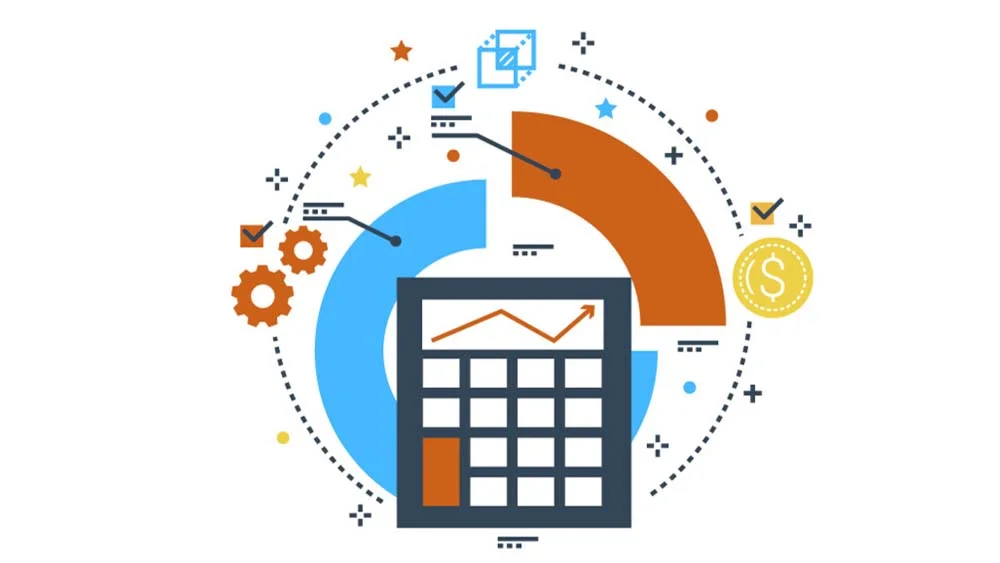In the field of business, personal development, and financial planning, you’ll need a solid understanding of growth rates if you want to plan ahead, which is one of the smartest decisions for successful entities. It’s helpful for tracking personal achievements, evaluating business progress, and evaluating investment development.
In this post, I want to show the way to calculate the growth rate for readers of all skill levels. Therefore, this guide provides straightforward information. Let’s explore the keys to determining growth rate together!
The Different Types of Growth Rates
Before beginning, it would be better to decide the type of growth because the rate of growth could change according to what you’re measuring:
- Linear Growth: This type happens at a constant rate. Imagine saving $100 every month for a year. The growth of your savings is steady and predictable.
- Exponential Growth: Things get interesting here. Exponential growth accelerates over time, like a snowball rolling downhill. It’s what startups dream of when they think of their user base expanding. Good news! With a reputable SMM panel you can increase your followers which is your customer base on social media platforms.
- Logistic Growth: Starting fast and then hitting a slowdown as it reaches a limit. It’s like filling a jar with water; initially, it fills quickly, but as it reaches the top, the growth rate slows down.
- Declining Growth: Not all growth is about getting bigger. Sometimes, it’s about reduction, like gradually cutting down on your caffeine intake. The rate at which you reduce consumption is your growth rate in reverse.
No matter what you’re doing—the spread of a population, a company, or your own progress towards a goal—different kinds of growth rates provide different kinds of insights. Understanding these differences is crucial to make decisions that are in line with your goals and circumstances.
The Basic Formula to Calculate Growth Rate
To calculate the growth rate, there is a simple yet powerful formula. Additionally, it’s the mathematical representation of the journey from point A to point B. It quantifies how much something has grown or shrunk over a specific period. To level up your game, you should understand this formula since it allows you to quantify change as well as observe which will provide a clear picture of your growth or decline. Here’s the basic formula for calculating the growth rate:
Growth Rate (%) = ((Final Value – Initial Value) / Initial Value) * 100
Let’s break down the formula components to picture the formula better:
- Initial Value: Think of this as the starting line of your race. It’s where you or your subject of interest began before any growth occurred.
- Final Value: This is the finish line. It represents the state of your subject at the end of the period you’re examining.
- Final Value – Initial Value: This subtraction gives you absolute change. It’s like measuring how far you’ve run in the race.
- Divide by Initial Value: To find the relative change, you divide the absolute change by where you started. This step puts everything into perspective, showing how significant the change is compared to the starting point.
- Multiply by 100: Finally, to express the growth rate as a percentage, you multiply by 100. This transformation turns the relative change into a percentage, making it easier to comprehend and compare.
How to Calculate Growth Rate: Step-by-Step
In order to put the theory into action, let’s simplify and apply the technique of determining growth rate.
-
Determine Your Initial and Final Values
To determine your initial value, you should identify your starting point which could be the initial amount of investment, the population at the beginning, or your first weight before starting at the gym. Then, define your final value which is an ending point. Look at the final worth of the investment, population, or your weight.
Calculate the Change in Value
Subtract the Initial Value from the Final Value to find the absolute change. If your investment grew from $1,000 to $1,500, the change is $500.
Divide by the Time Period
Adjust the calculation based on how long the growth took here as the investment grew from $1,000 to $1,500. Consider the number of years. For monthly growth, count the months.
Convert to a Percentage
To interpret the growth rate better, convert the from Step 3 into a percentage by multiplying by 100. This final step gives you the growth rate as a percentage, revealing the rate of change over time.
Examples of Growth Rate Calculations
For a better grasp of growth rate calculations, let’s look at some real-world instances. To help you put what we’ve learned into practice, we’ve included some examples that walk you through the process of determining the yearly growth rate of revenue and population.
Example 1: Calculating Annual Revenue Growth
Imagine a startup, Tech Innovations, which started the year with revenue of $200,000 and ended the year with $300,000. To find the annual revenue growth rate:
- Initial Value (Start of Year): $200,000
- Final Value (End of Year): $300,000
- Change in Value: $300,000 – $200,000 = $100,000
- Divide by Initial Value: $100,000 / $200,000 = 0.5
- Convert to Percentage: 0.5 * 100 = 50%
Result: Tech Innovations saw a 50% growth in annual revenue.
Example 2: Calculating Population Growth Rate
Consider a small town, Greenfield, which had a population of 10,000 at the start of 2019 and grew to 10,500 by the end of 2019. To calculate the population growth rate:
- Initial Population (2019 Start): 10,000
- Final Population (2019 End): 10,500
- Change in Population: 10,500 – 10,000 = 500
- Divide by Initial Population: 500 / 10,000 = 0.05
- Convert to Percentage: 0.05 * 100 = 5%
Result: Greenfield experienced a 5% population growth rate in 2019.
These examples show the flexibility of growth rate calculations. They are applicable to changes since there is a quite simple formula. The only thing you should do to know the context of the growth you want to measure is to determine the initial and end values. Try to stay away from typical mistakes which could be combining units or time periods, etc.
Common Mistakes to Avoid
There are common mistakes you should be aware of. One of them is the mixing period. You should be sure about your consistency in your time frame. If you begin with months, stick to it. Also, consider declines since they are equally important. Defining and fixing these negative downwards makes you grounded.
Additionally, you shouldn’t ignore units. You should ensure that your initial and final values are in the same units. Similarly, always remember the context to analyze numbers. Remember, a growth rate of 5% could be fantastic or lackluster, depending on the scenario. Last, always double-check your math.
Tools and Resources for Simplifying Growth Rate Calculations
There is no need for you to go it alone. There are several tools that can automate the calculations and make you ensure their accuracy.
- Online Calculators: Websites like Investopedia and Calculator.net offer free growth rate calculators. Just input your initial and final values along with the time period, and voilà, your growth rate appears as if by magic.
- Excel and Google Sheets: These are the sextants of modern calculation. Also, guiding through foggy financial forecasts with functions like RATE and CAGR. With a simple formula, these tools can turn a daunting array of numbers into a clear growth trajectory.
- Financial Planning Software: Tools like Quicken and Mint not only help track your financial journey but can also calculate growth rates for investments, showing you the lush lands that lie ahead.
- Business Analytics Platforms: For businesses navigating through competitive waters, platforms like Tableau and Google Analytics offer insights into growth trends, making it easier to sail towards profitable horizons.
- Mobile Apps: With apps like Financial Calculator on your smartphone, calculating growth rates is as easy as catching fish in a barrel. These apps are perfect for quick calculations on the go, ensuring you’re always on course.
Remember, while these tools can make calculations easier, they’re just instruments in your navigational kit. Knowing how to calculate growth rates wisely in your decision-making process is what truly charts the course to success.
FAQs
Can growth rate calculations predict the future performance of investments? Predicting future performance involves considering various factors, including market trends and economic conditions even though growth rate calculations provide insights based on past performance. Growth rates are a tool for analysis, not a crystal ball.
How frequently should growth rates be recalculated for a long-term project?
For long-term projects, it’s important to update growth rates regularly to include the latest data and changes. While recalculating these rates annually is typical, projects in rapidly changing sectors or unstable conditions might need more frequent revisions.
How do I adjust growth rate calculations for inflation or deflation?
Adjusting for inflation or deflation is crucial for maintaining the real value of your growth rate calculations. This can be done by using inflation-adjusted numbers or the Consumer Price Index (CPI) as a benchmark. Consider it a calibration process, ensuring your growth rate reflects the true purchasing power over time.







